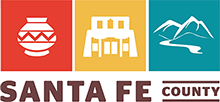Are You and Your Home Ready for a Wildfire?
With dryer Winters and very little rains in the Southwestern United States wildfires are occurring more often. Whether they are started by human factors or good old Mother Nature, they are part of a natural cycle that helps to maintain the health of our forest.
Today, more than ever, people are moving into remote areas to get away from the hustle and bustle of the city, but they are not addressing the dangers that exist in these areas.
When homes blend together with the wildland, a tremendous wildfire danger can exist. This creates the Wildland/Urban Interface (WUI). It is the addition of homes in this area that interrupts the natural cycle of wildfires. Ultimately, this contributes to a dangerous build-up of old vegetation which can contribute to an uncontrollable wildfire.
The threat of wildland fires are already at the extreme this year. We are experiencing Energy Release Component (ERC) percentages that we would normally not see until July.
As a homeowner, or potential homeowner in the Wildland/Urban Interface you can take a proactive approach to making your home and property a more Firewiseenvironment.
What You Can Do

Lean:
Prune shrubs and cut back tree branches, especially within 15 ft of your chimney.
Clean:
Remove all dead plant material from around your home; this includes dead leaves, dry vegetation and even stacked firewood. Prune large trees 6 to 10 ft high to prevent ground fires from spreading to tree tops.
Green:
Plant fire-resistant vegetation that is healthy and green throughout the year. For more information on creating a Firewise Landscape review the Firewise Landscape Checklist (pdf).
Fire Resistant Construction:
Brick, cement, plaster, stucco and concrete masonry resist heat and flames. Tempered and double pane glass windows can also make a home more resistant to the heat and flames of a wildfire.
Class A asphalt shingles, metal, tile and concrete roofing is also good protection for your home. A fire-resistant sub-roof can add an extra layer of protection.
Attachments to your home such as decks, porches or fences that are not made of a fire resistant material can start on fire and spread to the rest of your home
For more information on creating a Firewise Construction review the Firewise Construction Checklist(pdf).
Have a Disaster Plan:
The time to plan for an emergency is before the emergency happens. Take a few minutes to discuss with your family what actions you will take.
Emergency Access:
Identify your home and neighborhood with legible and clearly marked street names and numbers so response vehicles can rapidly find the location of the emergency. Include a driveway that is at least 14 ft wide with a vertical clearance of 13 ft 6 in to provide access for emergency apparatus.
The Fire Environment
("Living With Fire: A Guide for the Homeowner")
Also known as the surrounding conditions, influences, and modifying forces that determine wildfire behavior. There are three components of the Fire Environment that Firefighters recognize: 1) weather; 2) topography; and 3) fuel. Each of these components affect the possibility of a fire starting, the speed and direction a wildfire will travel, the intensity at which a wildfire burns and the ability to control and extinguish a wildfire. Although weather and topography cannot be changed, the fuels (vegetation) can be. Therefore, many of our opportunities to reduce wildfire threat lie in the proper management and manipulation of wildland vegetation.
Weather:
Dry, hot, and windy weather increases the likelihood of a major wildfire. These conditions make ignition easier, allow fuels to burn more rapidly, and increase fire intensity. Keep in mind that high wind speeds can transform a small, easily controllable fire into a catastrophic event in a matter of minutes.
Topography:
 |
Steepness of a slope most influences fire behavior. As the steepness of a slope increases, the fire spreads more quickly. Other important topographic factors include: aspect and steep, narrow drainages. |
Fuel:
| Fuel is required for any fire to burn. In relation to wildfires, fuels almost always consist of living vegetation (trees, grass, shrubs, and wildflowers) along with dead plant material. Houses, when involved in a wildfire, become a source of fuel. The amount, size, moisture content, arrangement and other fuel characteristics can influence ease of ignition, rate of fire spread, length of flames produced and other fire behaviors. |  |
The Human Environment
|
("LivingWithFire: A Guide for the Homeowner") |
When people are living in high-hazard fire environments, the human-built environment becomes an important factor in predicting the loss of life and property. Untreated wood shake and shingle roofs, narrow roads, limited access, lack of fire-wise landscaping, inadequate water supplies, and poorly planned subdivisions increase the risk to people living with the threat of wildfire. |
Community Fuel Reduction "Chipper Day" Prerequisites
 |
|
For additional information, please contact Mike Feulner, SFCFD Wildland Coordinator at 505- 995-6523 or mfeulner@santafecountynm.gov.
Other Resources
Santa Fe County Wildland Divison Project Site
Firewise: www.firewise.org
New Mexico State University: www.cahe.nmsu.edu/defensible_zone/welcome.html
Living with Drought, Fire and Bark BeetlePublication (PDF)
Defensible Space Guide (fromUSDA): It Could Happen to You

